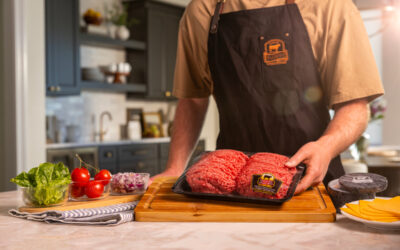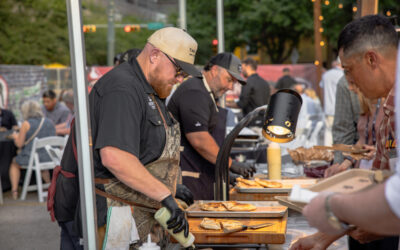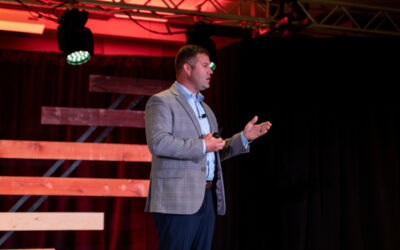
Every story has a number: 1,650
That’s the most you’d want a steer to weigh in pounds, a ballpark upper limit that could still qualify for CAB, getting under the 1,050-pound (lb.) carcass weight limit. Providing it had a dressed carcass yield of no more than 63.63% (yes, that’s a repeating decimal but still a rational number). Dressing percentage is simply carcass weight divided by live weight.
I’ve never had a steer finish that heavy, nor much above 1,400 lb., and in fact no rational cattle feeder would use 1,650 lb. as the target, because there are overweight discounts on the grid beyond that point. A fairly even finished pen of cattle will vary in weight by 300 lb., so it’s not rational to set an upper target average above 1,450 lb.
Carcass weights have trended higher for 40 years and in the 1970s, when the Certified Angus Beef brand was getting started, that extreme upper limit would have been 300 pounds lighter at about 1,350 lb. The average carcass weight from all fed cattle was often less than 700 lb.
It seemed rational to discuss finished weights as highly correlated with mature cow size. Those discussions are still going on, but it’s less and less clear which is the driver, steer weight or cow size.

That’s not the kind of irrational number you get when trying to find the square root of 2 or pi, but it surely means we are seeing more discounts for carcasses that violate the 1,050-lb. limit.
When CAB started, there was no weight limit, but the first of those was set at 999 lb. in 2006. And as grid heavyweight discount limits moved up from 950 to 1,000, to 1,050 and even 1,100 lb. in some markets, the CAB limit readjusted to the 1,050 limit a year ago. During those eight years, average carcass weights increased by two or three times that margin.
These words have been written by rational observers every few years for decades, but I will join in: Finished cattle weights will likely not increase significantly more in the years to come.
If there is any more logic now than in the years before, it is that we have finally entered a robust rebuilding phase that will begin to add more cattle to the harvest supplies, thus reducing the market pressure to make them bigger, and perhaps, finally leaving the upper weight limit capped where it stands today.
I agree with Paul in setting the ideal carcass weight in today’s market at 900 lb., which means a finished live weight barely over 1,400 lb. for steers. A great many other factors such as feed and cattle prices and genetics say 1,350 lb. is a more practical average target for my steers.
Do some math and figure out your target. And let’s keep building tomorrow together.
–Steve
If you want to catch up on our month-long blogging adventure, “Every number has a story,” check out these links:
Day one: $6.93
Day two: 2.5 million
Day three: $204.10
Day four: 12.1 million
Day five: 11/13
Day six: 8 million
Day seven: 139
Day eight: $39
Day nine: 30.1%
Day 10: 120 million
Day 11: -2.26
Day 12: 12 to 15 minutes
Day 13: 30%
Day 14: 32 million
Day 15: $154,000
Day 16: 118
Day 17: .51
Day 18: 105
You may also like
Success, Despite Challenges
Today’s market is complex and competitive. The collective effort of stakeholders across the supply chain positions Certified Angus Beef to meet the record demand for premium beef moving forward. Signals across the beef industry are clear and Angus farmers and ranchers seeking high-quality genetics that deliver premium beef are producing a product in high demand.
Keep the Supply Coming
A record-high 800 registrants from 17 countries gathered in Austin, Texas, to learn more about CAB, become inspired by the culinary work of chefs and pitmasters, and celebrate sales and production success. But at the forefront: supply and demand, a reflection of the chaotic past year, and preparing for what’s ahead.
Consumer Demand, Power of Quality
Demand for high-quality beef persists. But with that demand comes challenges. From tight cattle supplies to higher costs and increasing pressure on retailers to deliver a consistent eating experience, the pressure is on. David O’Diam, CAB VP of retail, addressed the current retail beef environment, highlighting both opportunities and challenges in today’s marketplace.



